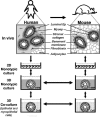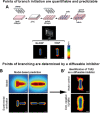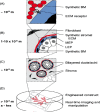Architecture Is the Message: The role of extracellular matrix and 3-D structure in tissue-specific gene expression and breast cancer
- PMID: 21132084
- PMCID: PMC2995891
Architecture Is the Message: The role of extracellular matrix and 3-D structure in tissue-specific gene expression and breast cancer
Abstract
I was honored to deliver the 2(nd) Stanley Korsmeyer memorial Lecture on May 9(th), 2007 in Padova, Italy. Stan will always occupy a very special place in my heart: I admired him greatly not only for his magnificent and original science but also for his integrity and his grace. This review, which summarizes my laboratory's contribution to cell and cancer biology in the last 30 years, is dedicated to Stan's memory, and to Elaine Fuchs, one of my most cherished friends without whose support this work would not have gained the degree of recognition it enjoys today. My thanks also to the Pezcoller Foundation for making that week in May, 2007 one of the most memorable in my scientific life.
Figures













Similar articles
-
From the History of the Croatian Dermatovenereological Society - The Croatian Medical Association and an Overview of Important Information Regarding the Journal Acta Dermatovenerologica Croatica.Acta Dermatovenerol Croat. 2018 Dec;26(4):344-348. Acta Dermatovenerol Croat. 2018. PMID: 30665489
-
Remembering Judah Moses Folkma.Int J Biol Markers. 2008 Jan-Mar;23(1):63. doi: 10.1177/172460080802300111. Int J Biol Markers. 2008. PMID: 28207107
-
Abass Alavi: A giant in Nuclear Medicine turns 80 and is still going strong!Hell J Nucl Med. 2018 Jan-Apr;21(1):85-87. doi: 10.1967/s002449910713. Epub 2018 Mar 20. Hell J Nucl Med. 2018. PMID: 29550853
-
Challenges and Role Changes in Caring for Adult Children With Cancer.J Adv Pract Oncol. 2018 Sep-Oct;9(6):634-638. Epub 2018 Sep 1. J Adv Pract Oncol. 2018. PMID: 31186984 Free PMC article. Review.
-
Perspectives on Geoff Burnstock as researcher, teacher and friend.Biochem Pharmacol. 2021 May;187:114395. doi: 10.1016/j.bcp.2020.114395. Epub 2020 Dec 28. Biochem Pharmacol. 2021. PMID: 33382971 Review.
Cited by
-
E-Cadherin in Pancreatic Ductal Adenocarcinoma: A Multifaceted Actor during EMT.Cells. 2020 Apr 22;9(4):1040. doi: 10.3390/cells9041040. Cells. 2020. PMID: 32331358 Free PMC article. Review.
-
Pre-Clinical In Vitro Models Used in Cancer Research: Results of a Worldwide Survey.Cancers (Basel). 2021 Nov 30;13(23):6033. doi: 10.3390/cancers13236033. Cancers (Basel). 2021. PMID: 34885142 Free PMC article.
-
Three-Dimensional Spheroids as In Vitro Preclinical Models for Cancer Research.Pharmaceutics. 2020 Dec 6;12(12):1186. doi: 10.3390/pharmaceutics12121186. Pharmaceutics. 2020. PMID: 33291351 Free PMC article. Review.
-
Anticancer and chemosensitization effects of cannabidiol in 2D and 3D cultures of TNBC: involvement of GADD45α, integrin-α5, -β5, -β1, and autophagy.Drug Deliv Transl Res. 2022 Nov;12(11):2762-2777. doi: 10.1007/s13346-022-01137-2. Epub 2022 Feb 25. Drug Deliv Transl Res. 2022. PMID: 35217991 Free PMC article.
-
ATR mediates cisplatin resistance in 3D-cultured breast cancer cells via translesion DNA synthesis modulation.Cell Death Dis. 2019 Jun 12;10(6):459. doi: 10.1038/s41419-019-1689-8. Cell Death Dis. 2019. PMID: 31189884 Free PMC article.
References
Grants and funding
LinkOut - more resources
Full Text Sources
